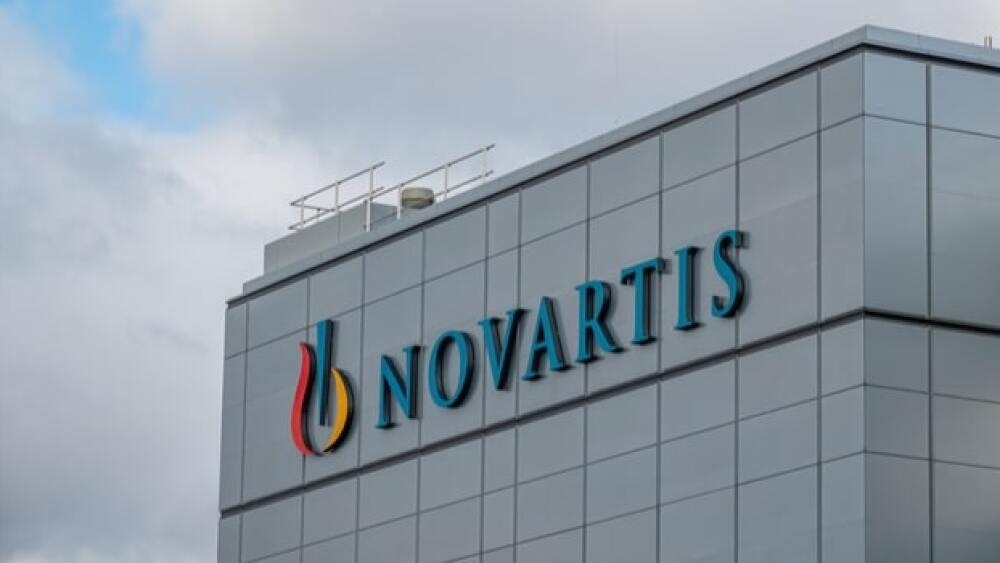Total sales for the quarter were $12.8 billion, with its innovative medicines, which include key assets, bringing in $10.8 billion.
Two months after Novartis announced changes to streamline its operations, all systems appear to be running smoothly as the Swiss pharma giant turned in another strong quarter fueled by double digit growth in key, branded products.
The second quarter saw sales for Novartis increase by 5%, driven by key drugs, Entresto, Kesimpta, Kisqali and Zolgensma. Total sales for the quarter were $12.8 billion, with its innovative medicines, which include those key assets, bringing in $10.8 billion.
Combined with its Q1 sales, Novartis saw $25.3 billion in net sales for the first six months of the year. Each of these cornerstone drugs for Novartis saw significant growth. Entresto saw a 33% increase in sales, while Kesimpta saw a 270% increase. Kisqali’s sales increased by 43%, and the gene therapy for spinal muscular atrophy increased by 26%.
During the second quarter, Novartis saw three branded drugs receive new approvals in different indications. Cosentyx was approved in Europe for childhood arthritic conditions. Kymriah was approved in the U.S. as well as in Europe for adults with relapsed or refractory follicular lymphoma. Scemblix received a positive CHMP opinion in Europe for adults with Ph+ chronic myeloid leukemia.
Streamlined Operations
Novartis CEO Vas Narasimhan said implementation of the company’s streamlined organizational model is “progressing well” and is expected to deliver approximately $1.5 billion in savings.
“Taken together, these six brands now constitute 32% of innovative medicines sales, and they’re growing at 31%. And I’m getting confident in that growth outlook that we’ve outlined,” Narasimhan said in a call with reporters.
He added that the company’s mid-stage pipeline remains on track for more than 20 potential regulatory approvals by 2026. However, Narasimhan noted that the company is also looking closely at its pipeline to determine which assets remain the best fit for its core areas.
Narasimhan also said the company is exiting its developmental efforts in asthma and chronic obstructive pulmonary disorder and will “streamline the medicine portfolio inner pipeline so that we can focus on the medicines that matter most in our core therapeutic areas.”
Novartis’ core areas are hematology, solid tumors, immunology, neuroscience and cardiovascular. Because of its focus on these areas, the company intends to seek partners for some of its mid-stage assets, including its assets for asthma, retinitis pigmentosa and nonalcoholic steatohepatitis (NASH).
One drug the company hoped to bring to the U.S. market has hit a roadblock that may cause Novartis to cease its goal of securing approval from the U.S. Food and Drug Administration in at least one oncology indication. Before the Q2 announcement, Novartis saw its chance to bring a new PD-1 inhibitor into the U.S. market hit a roadblock.
The FDA announced it deferred action on the Biologics License Application for tislelizumab as a potential second-line treatment for patients with unresectable or metastatic esophageal squamous cell carcinoma (ESCC) until inspections of facilities in China can be completed.
While that potential approval is delayed, Narasimhan noted that a potential filing in lung cancer may not happen as the FDA has suggested the data from the Beigene-driven study does not adequately reflect the U.S. population in terms of the number of patients and standard of care used in the study.
“I do think that the FDA is making it very clear now that they expect a -- any studies to be filed that they’re global in nature, they have an appropriate amount of U.S. patients, and that the standard of care used reflects standard of care in the U.S.,” he said.
Sandoz Decision
As Novartis continues its strategic assessment of generics business Sandoz, the unit saw a global sales increase of 5% to $2.8 billion, although sales in the U.S. were down about 4%. Novartis said the increase benefitted from a “return towards normal business dynamics, with growth across all business franchises.”
In October 2021, Novartis began to conduct a strategic review of Sandoz. Narasimhan said the positive performance in the Sandoz unit in the most recent quarter has allowed the company to increase its guidance for the full year.
“When you look at the drivers for Sandoz’s sales performance, it’s primarily in Europe where we are a leader or the leading generics company with 4% growth driven by both launches, as well as the recovery of the healthcare systems, we had double-digit growth in the rest-of-world markets, Japan and other emerging markets,” Narasimhan said. “And we’ve seen a stabilization in the U.S. business, setting us up with future biosimilar launches and small molecules launches to drive growth in the U.S. over the years to come.”





